Where do coffee beans come from? This question is the gateway to a fascinating story that spans continents, climates, cultures, and centuries.
As a Q-grader and coffee explorer, I invite you to embark on this journey with me, unveiling the origins, growing conditions, processing methods, and global pathways that coffee beans travel before reaching your cup.
Understanding! Where do coffee beans come from? It is essential not only for appreciating your coffee but also for choosing beans that match your taste and ethical values. Let’s start at the very beginning.

What Are Coffee Beans? The Seed Inside the Cherry
When you hear “coffee bean,” you might imagine a simple bean, but coffee beans are actually the seeds inside a fruit called the coffee cherry. These cherries are small, round, and vibrant red or yellow when ripe, resembling little berries on the coffee plant. Inside each cherry usually lie two seeds, which are what we call coffee beans. Occasionally, some cherries contain a single seed called a pea berry, prized by connoisseurs for its unique flavor.
Understanding this fact, that the bean is a seed of a fruit, is crucial because it explains much about the journey, care, and flavor development of coffee. 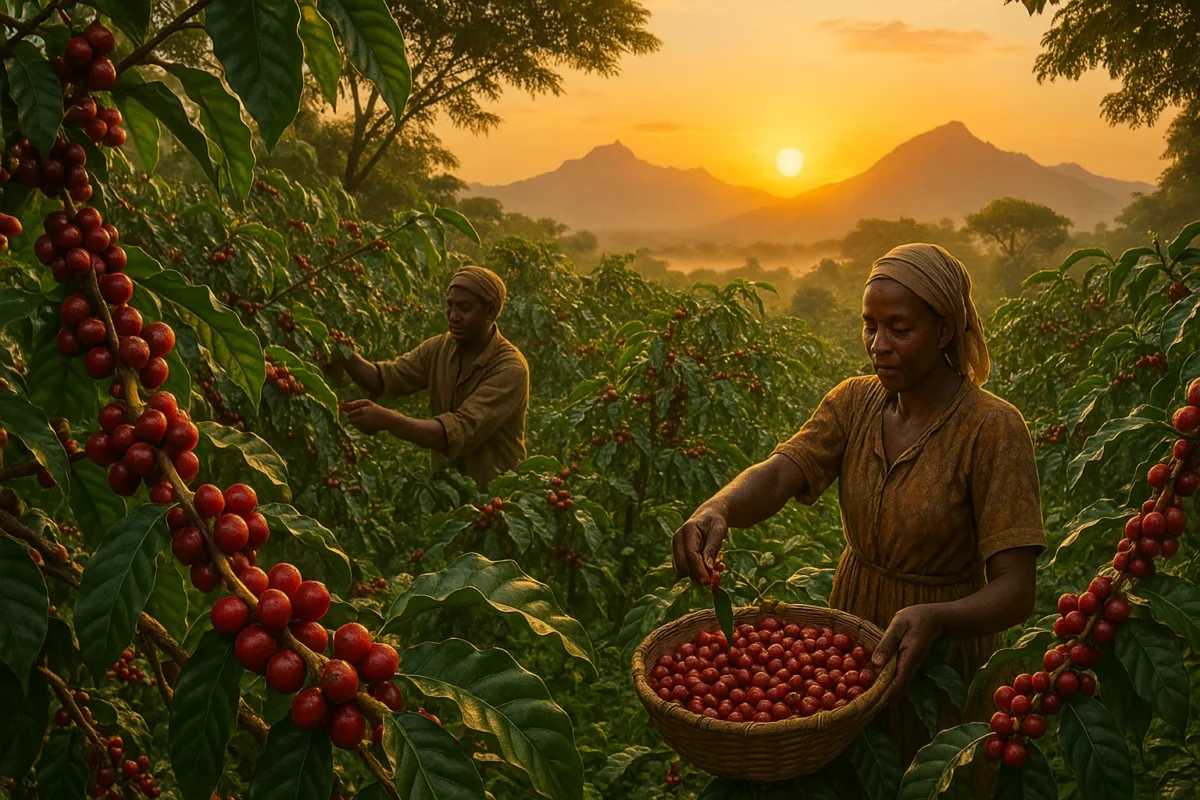
The Legendary Birthplace: Ethiopia’s Ancient Coffee Forests
So, where do coffee beans come from? The story starts in the Ethiopian highlands, where wild coffee plants have flourished for centuries. Legend has it that around the 9th century, a goat herder named Kaldi noticed his goats frolicking energetically after eating red berries from a particular bush. Intrigued, he tasted the berries himself and discovered their energizing effects.
Ethiopia is still home to some of the most prized and diverse coffee varieties, known for their floral, citrus, and fruity notes, a reflection of the region’s unique microclimates and soil composition.
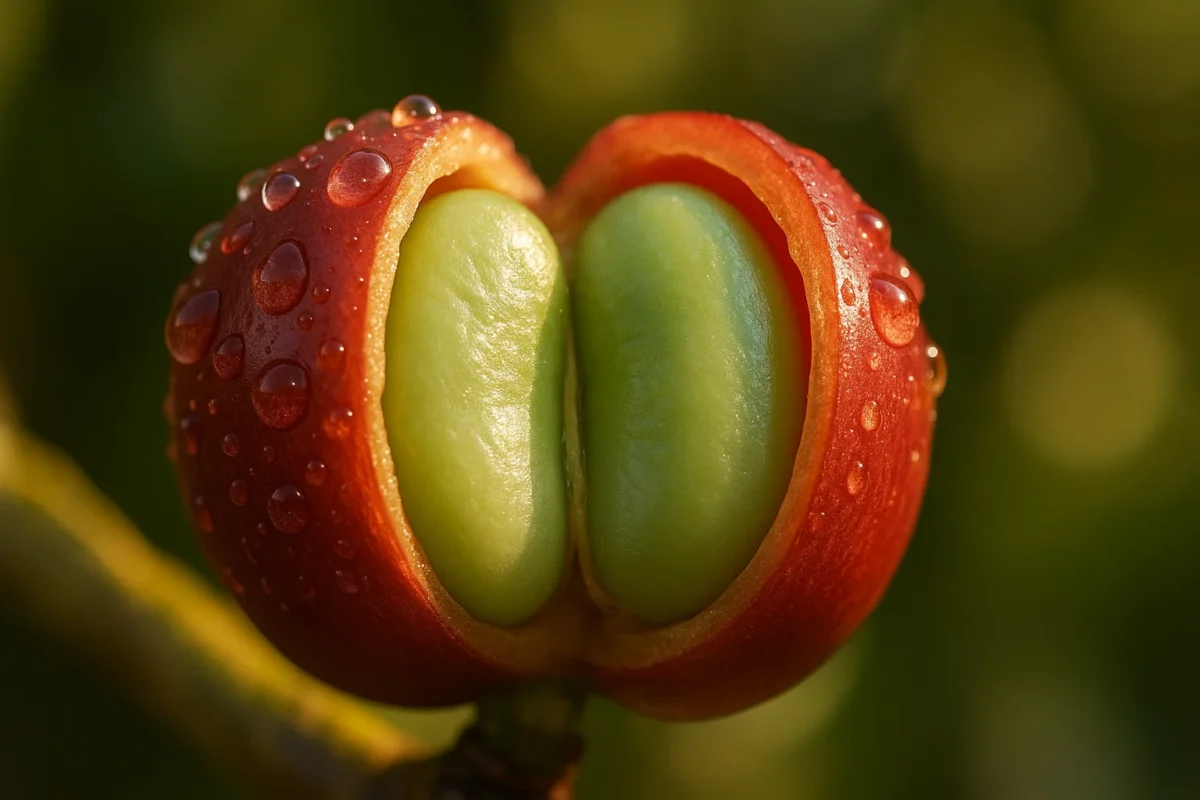
The Coffee Belt: Nature’s Perfect Nursery
When asking Where do coffee beans come from? In terms of geography, the answer is the coffee belt, a narrow region around the equator between the Tropics of Cancer and Capricorn. This zone spans Latin America, Africa, and Asia, providing the ideal climate and conditions coffee plants need:
- Altitude: Between 500 to 2,500 meters, the altitude greatly affects bean density and flavor complexity.
- Temperature: Arabica thrives in 15-24°C; Robusta prefers warmer 24-30°C.
- Rainfall: Annual precipitation between 1,200 to 2,500 mm is ideal, with dry seasons for harvesting and drying.
- Soil: Volcanic, well-drained soils enrich beans with unique minerals.
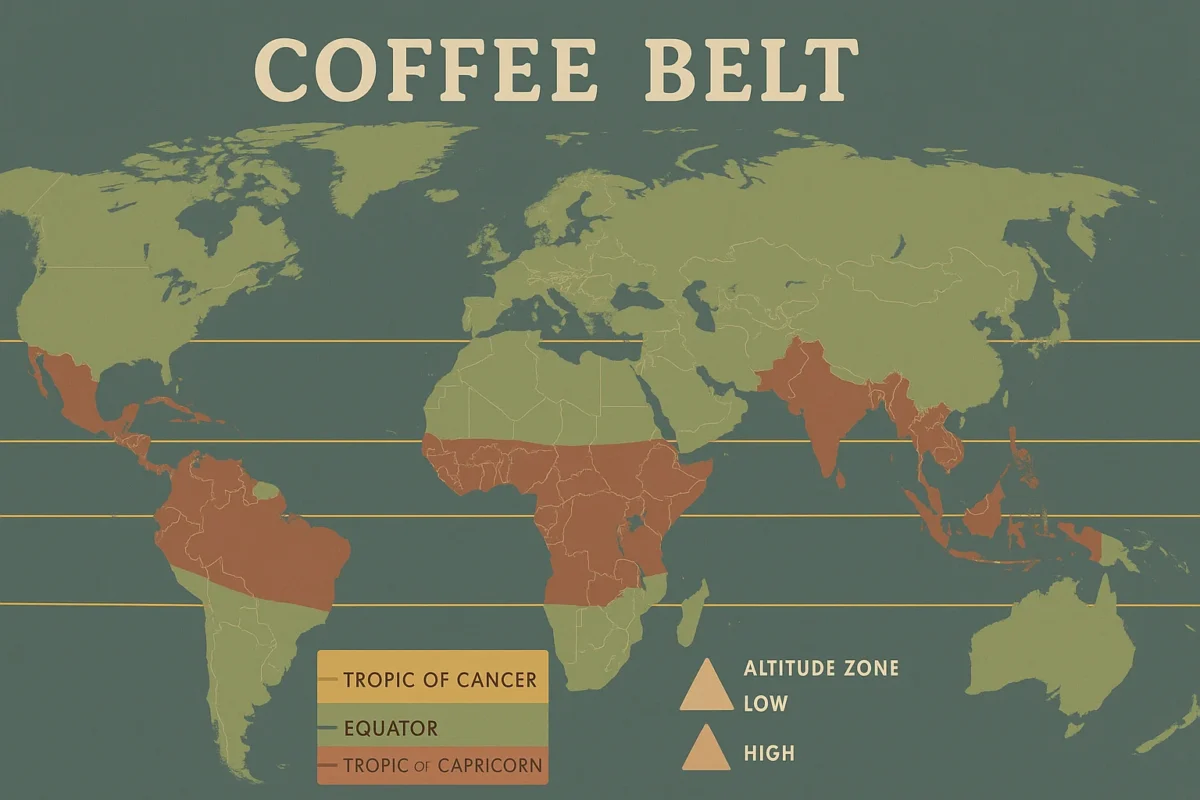
This explains why coffee grows only in select parts of the world, making each region’s beans distinct.
The Coffee Plant: Growth, Flowering, and Harvest
Coffee plants bloom with delicate white jasmine-like flowers about one year after planting. It then takes approximately 3-4 years for the plant to bear fruit commercially. These fruits, the coffee cherries, mature over months and change color as they ripen.
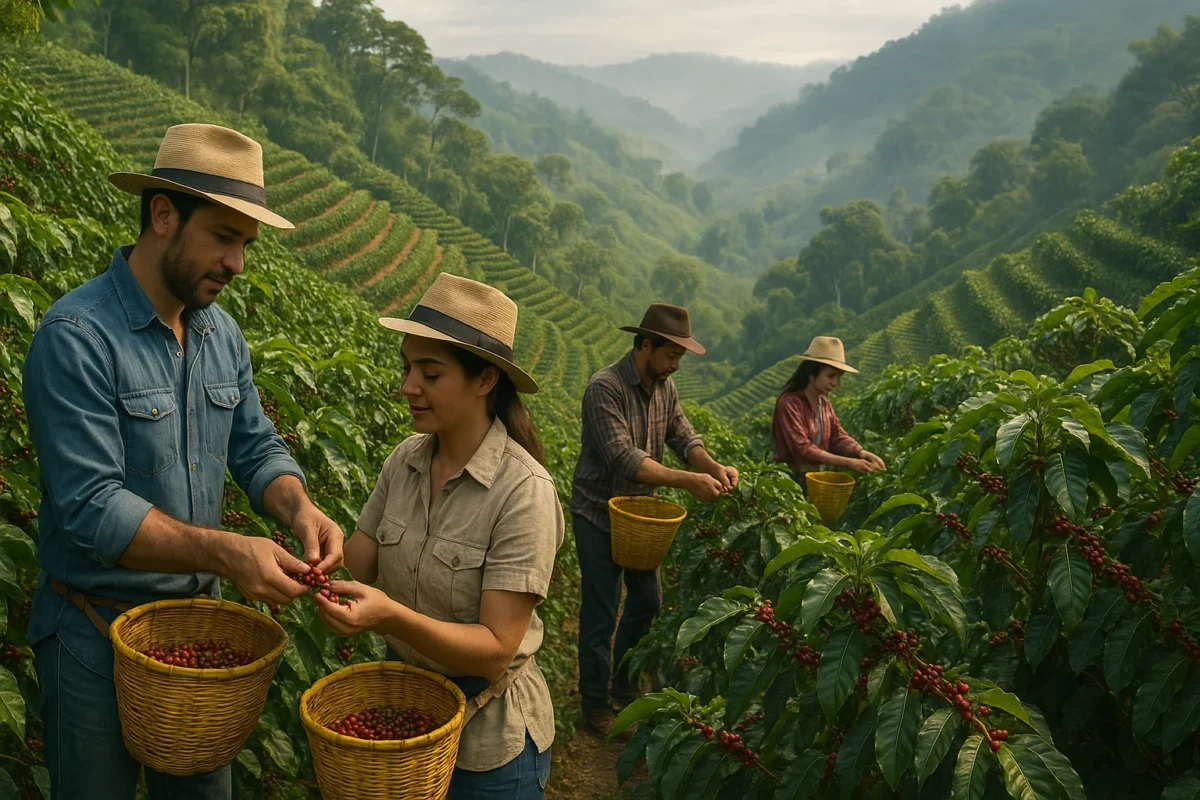
Farmers carefully handpick only the ripe cherries, often using selective picking methods to ensure quality. The care in harvesting impacts the flavor profoundly.
Major Coffee Species: Arabica, Robusta, and Beyond
While exploring where do coffee beans come from? It’s important to note that the two main species cultivated globally are:
- Arabica (Coffea arabica): Grown mainly in high altitudes, it accounts for about 60–70% of global production. Arabica beans are prized for their complex flavor profiles, lower caffeine content, and delicate acidity.
- Robusta (Coffea canephora): Grown at lower altitudes and warmer climates, Robusta has higher caffeine content and a stronger, earthier flavor. It’s often used in espresso blends and instant coffees.
Lesser-known species like Liberica and Excelsa are cultivated in limited regions and offer unique flavor experiences, but constitute a small fraction of production.
The Journey of a Coffee Cherry: Processing Methods
After harvesting, the journey continues with processing to remove the cherry’s pulp and prepare the seeds for roasting:
- Washed Process: The fruit pulp is removed before drying. This method produces clean, bright flavors and is common in Latin America and parts of Africa.
- Natural Process: Whole cherries are dried in the sun, imparting fruity and heavier-bodied characteristics. Typical in Ethiopia and Yemen.
- Honey Process: Partial mucilage remains on the bean during drying, balancing sweetness and acidity.
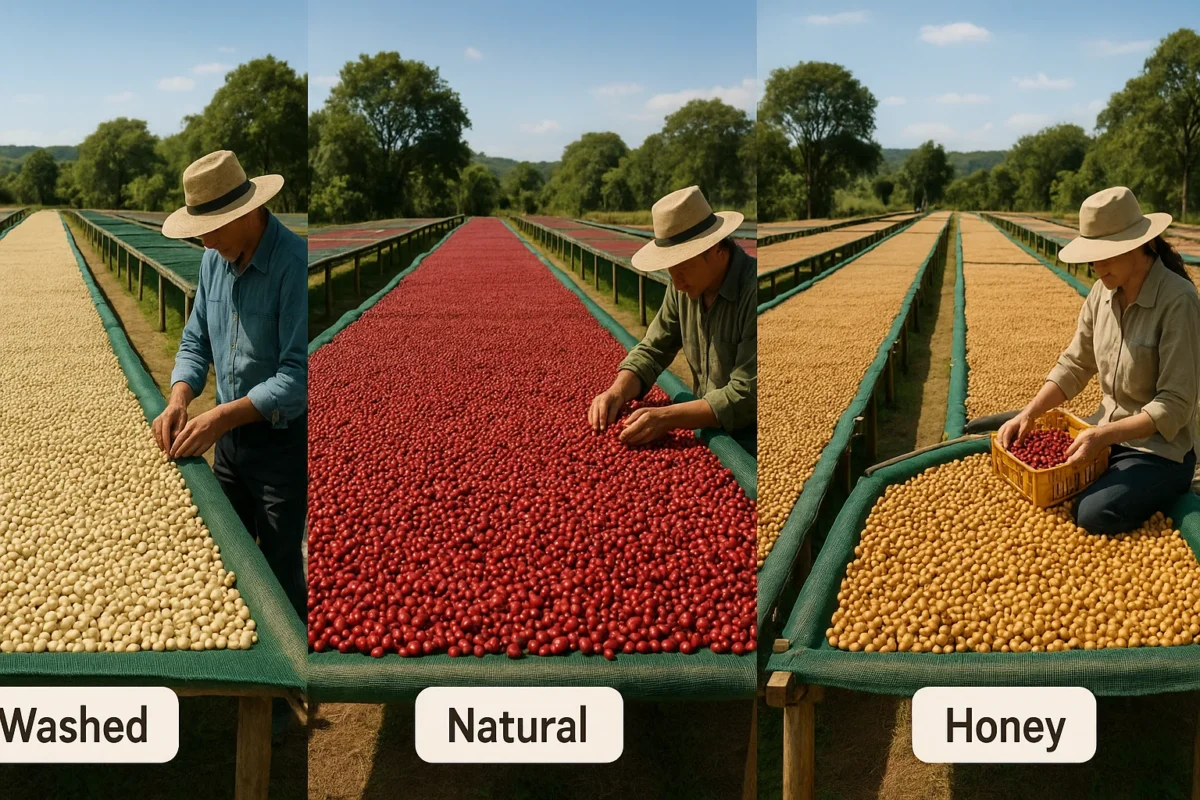
Each method shapes the flavor and aroma, connecting origin to cup.
Microclimates and Terroir: The Subtle Flavor Sculptors
The subtlety of coffee flavors owes much to microclimates and terroir, the interplay of altitude, soil, rainfall, and temperature unique to each farm. These factors explain why coffee from two nearby farms can taste remarkably different.
Terroir influences everything from acidity to sweetness and body, turning coffee tasting into an exploration of place as much as bean variety.
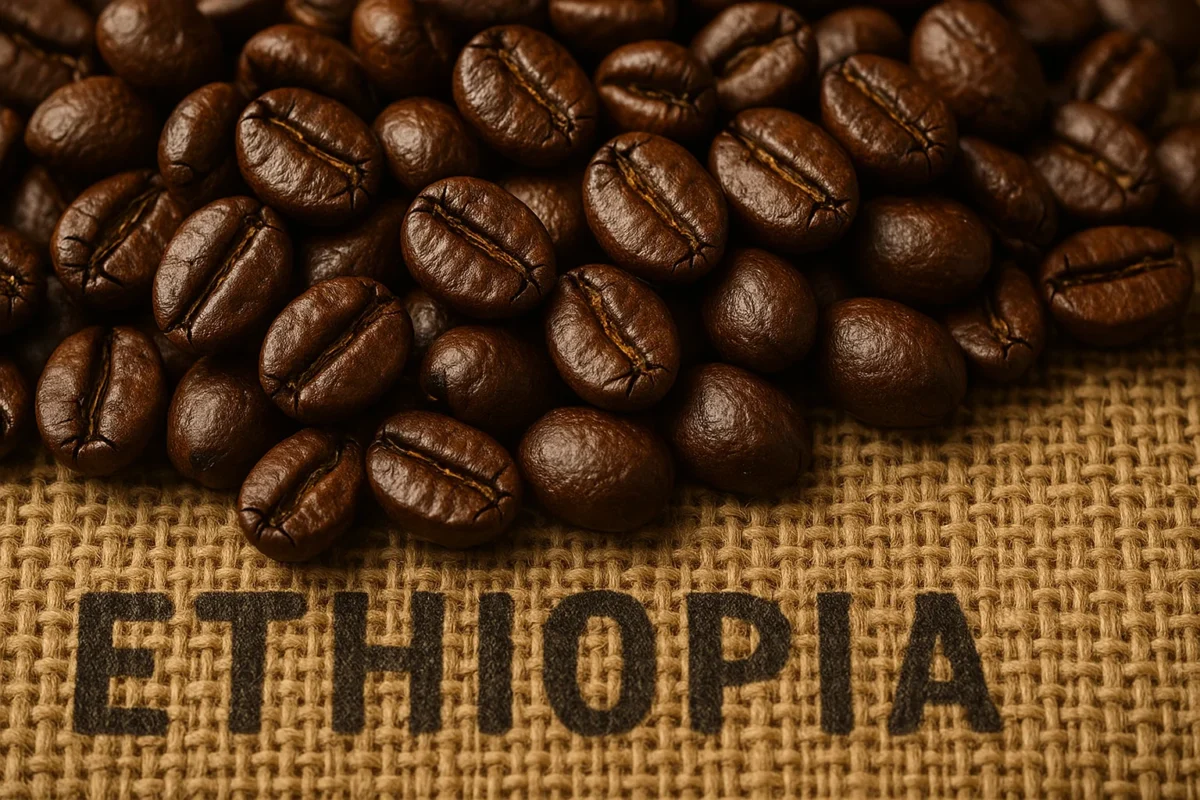
From Farm to Your Cup: The Coffee Supply Chain
After processing, green coffee beans are sorted, graded, and packed for export. The beans traverse oceans and continents, arriving at roasting facilities where they undergo transformation into the aromatic, flavorful beans we recognize.
In markets like the UK, the demand for high-quality, ethically sourced coffee continues to grow, influencing sourcing decisions.
Ethical Sourcing and Sustainability: Brewing a Better Future
Understanding where do coffee beans come from? Also means considering the human and environmental impact. Certifications like Fair Trade and Rainforest Alliance ensure farmers receive fair wages and engage in sustainable farming practices.

Supporting ethical coffee helps strengthen communities, preserve biodiversity, and promote a healthier planet.
Climate Change: Challenges and Adaptations in Coffee Growing
Climate change poses significant threats to coffee-growing regions. Rising temperatures and erratic rainfall patterns reduce suitable cultivation zones, forcing farmers to adapt through shade management, drought-resistant varieties, and innovative farming techniques.
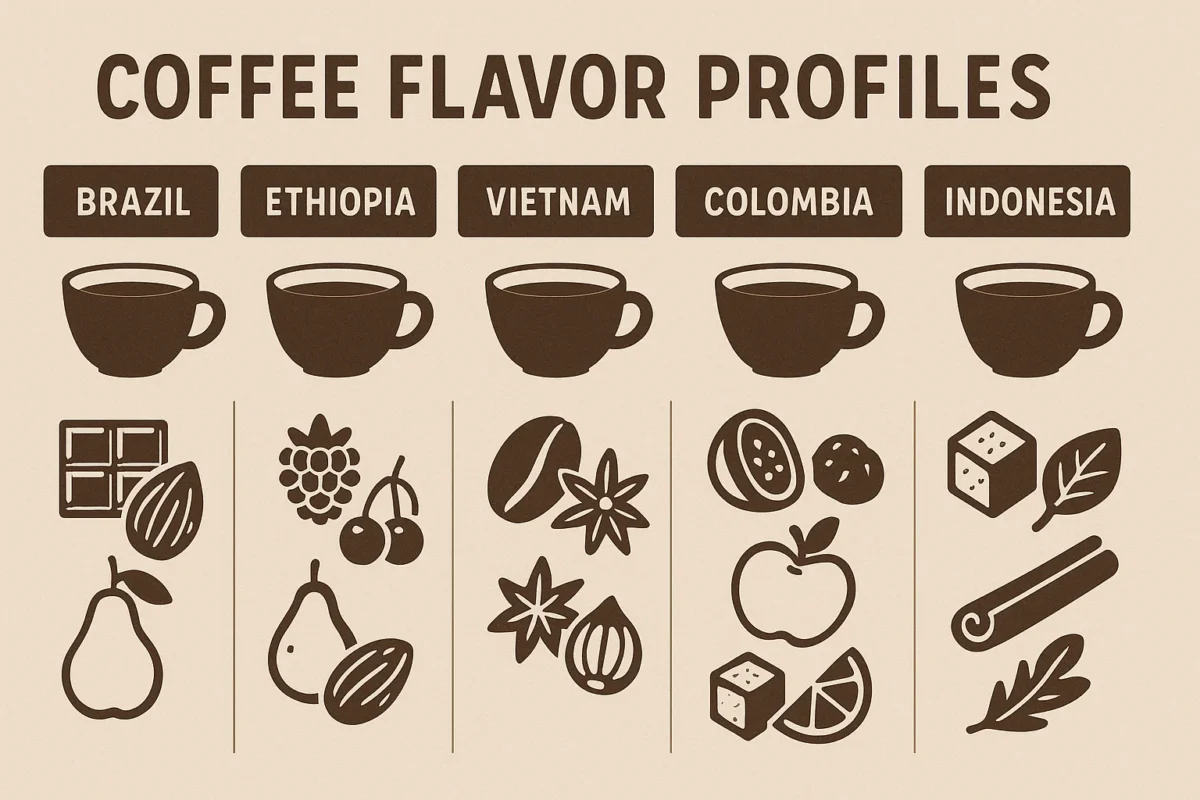
Industry-wide efforts aim to secure the future of coffee amid changing global climates.
Busting Common Myths About Coffee Origins: An Expert’s Perspective
As a certified Q-grader and seasoned coffee analyst with over 7 years of experience tasting and evaluating hundreds of single-origin coffees worldwide, I’ve encountered many myths that cloud the true story of where do coffee beans come from.
Clearing these misconceptions is vital, not only for coffee lovers seeking authenticity but also to honor the dedication of millions of farmers who nurture these beans.
Myth 1: Coffee Can Grow Anywhere
Fact: Coffee cultivation is an intricate science rooted deeply in geography and climate. Through years of field research and sensory evaluation, it’s clear that coffee plants thrive only within the coffee belt, a specific climatic zone between the Tropics of Cancer and Capricorn.
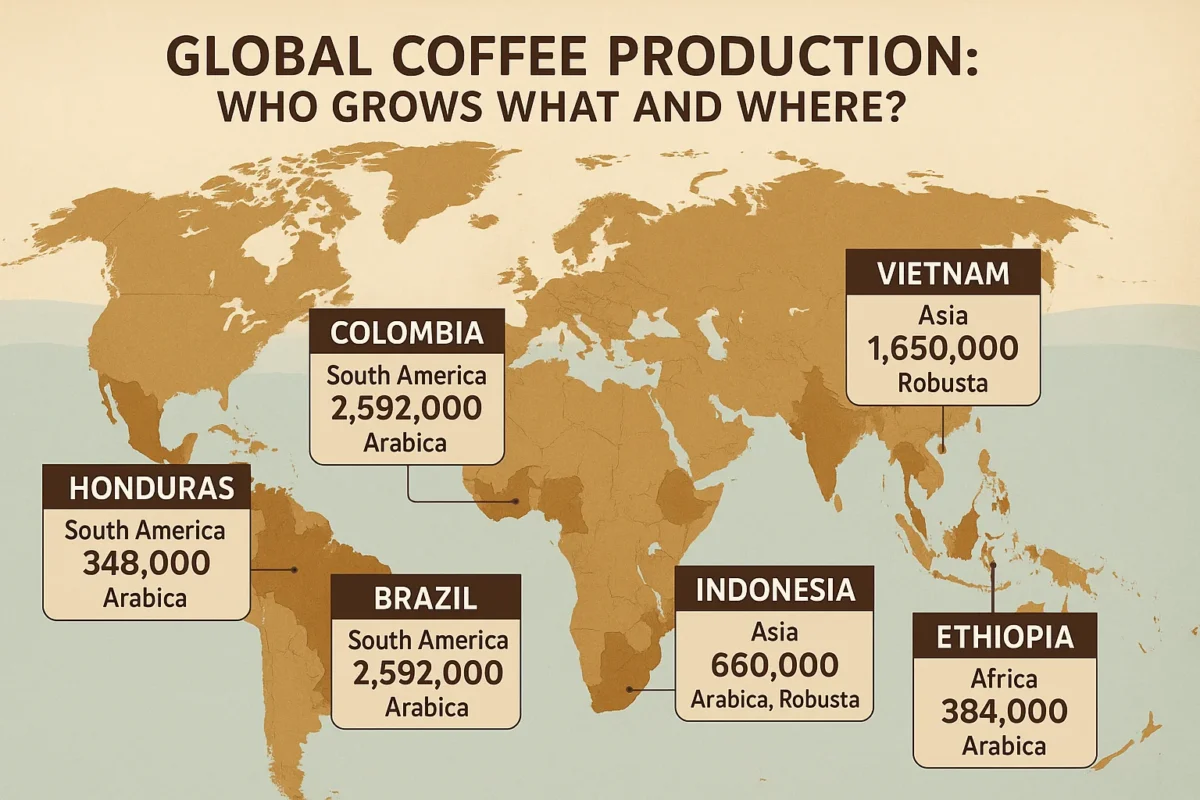
This belt offers optimal altitude, temperature, rainfall, and soil conditions necessary for the coffee plant’s delicate biology. Growing coffee outside this zone compromises bean quality and yield.
My firsthand experience visiting coffee farms in Ethiopia, Colombia, and Vietnam confirms the critical role of terroir and microclimates in crafting distinct, high-quality coffee.
Myth 2: All Coffee Beans Taste the Same
Fact: Having cupped over a thousand coffee samples as a Q-grader, I can confidently say that the flavor diversity in coffee beans is astounding. It’s shaped by species, origin, altitude, processing, and terroir, the unique environmental fingerprint of each farm.
Scientific studies and sensory data support that even small differences in soil minerals or elevation create distinct flavor profiles. For example, Ethiopian Sidamo coffee’s floral notes contrast sharply with the nutty, chocolatey profile of Brazilian Arabica.
Understanding these layers of complexity not only enhances your palate but fosters a deeper respect for coffee producers’ craft and environment.
Myth 3: Decaf Coffee Beans Have Zero Caffeine
Fact: The decaffeination process is sophisticated and scientifically refined but cannot achieve complete caffeine removal. Decaf beans typically retain 1-5% of their original caffeine content.
As an expert, I stress the importance of transparency: decaf means “low caffeine,” not “no caffeine.” This subtlety matters for consumers sensitive to caffeine and reflects the limitations of current food science.
Reputable decaffeination methods such as Swiss Water Process and CO₂ extraction strive for purity while preserving flavor, a balance that continues to improve with ongoing research.
Why These Myths Matter: An Expert’s Call to Appreciative Coffee Drinking
By debunking these myths, you join a global community of informed coffee lovers who value authenticity, sustainability, and craftsmanship. This awareness supports ethical sourcing and encourages appreciation of the complex journey beans undertake, from wild plants in remote forests to the perfect cup.
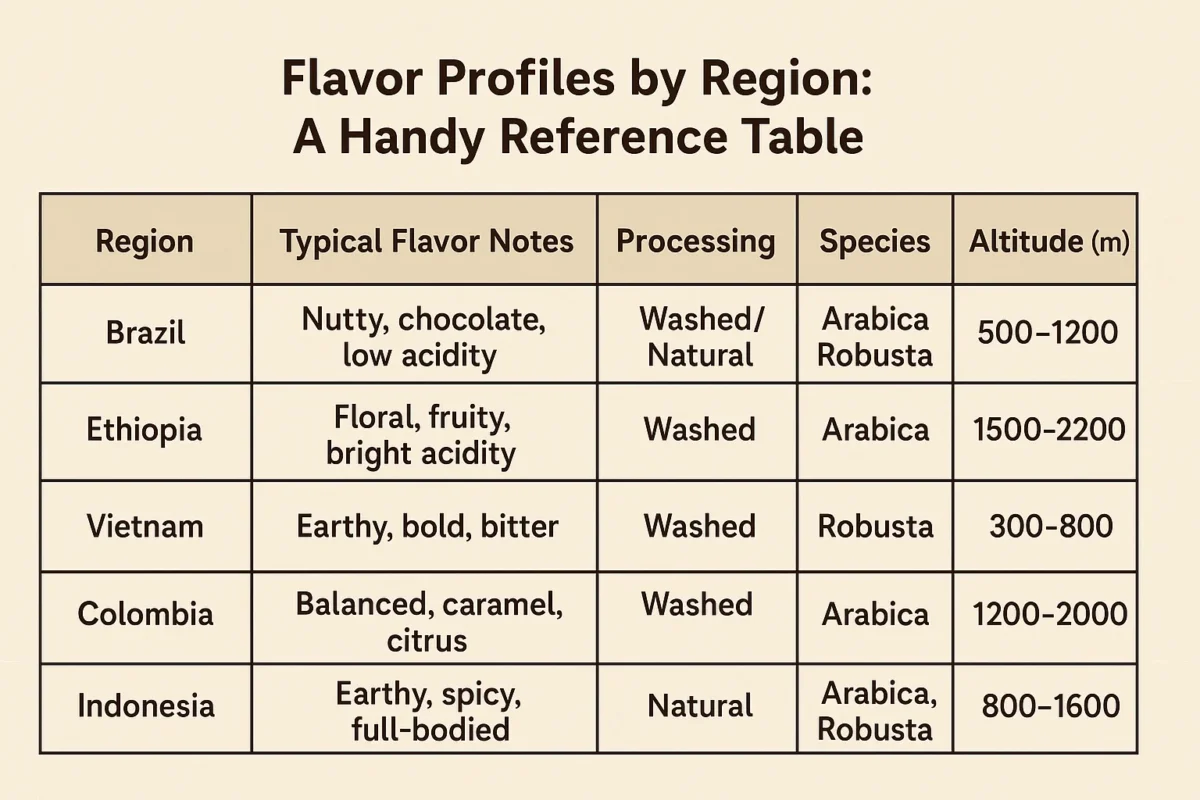
As someone who has walked coffee farms, evaluated beans at specialty labs, and engaged with farmers worldwide, I assure you: understanding where do coffee beans come from enriches your coffee experience beyond taste, connecting you with history, culture, and the environment.
Voices from the Coffee Farms
“Coffee is more than a crop; it’s our heritage and livelihood,” shares Ana from Colombia. “Every season brings challenges, but our passion and care are in every cherry. We hope coffee lovers everywhere appreciate this journey.”
Coffee in the UK and US: Consumption, Imports, and Evolving Culture, An Expert’s View on Where Do Coffee Beans Come From?
When exploring, where do coffee beans come from? It’s essential to understand not just the origins of the beans but also the cultures that consume them. Both the UK and the United States play pivotal roles in shaping global coffee trends through their consumption patterns and import preferences.
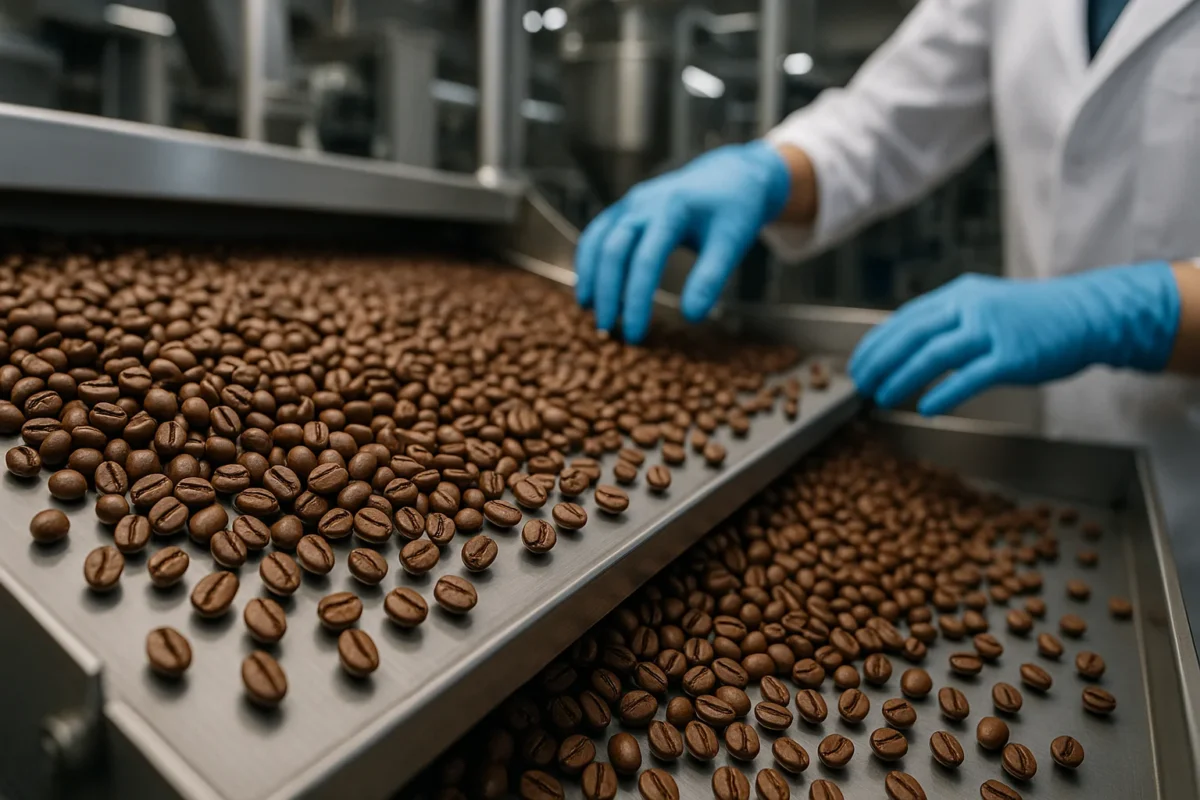
UK Coffee Consumption and Imports: Discovering Where Do Coffee Beans Come From? Through the British Cup
The UK drinks nearly 100 million cups of coffee daily, with imports primarily coming from countries that answer the question, “Where do coffee beans come from?” Including Brazil, Vietnam, Colombia, Honduras, and Ethiopia. British consumers have developed a growing appreciation for specialty coffees that highlight the unique origins and stories behind these beans.
Brazil leads the pack as the UK’s main supplier, offering mainly Arabica beans celebrated for their smooth, nutty flavors. The growing demand for ethically sourced and Fair Trade coffees in the UK reflects an educated consumer base that cares deeply about where do coffee beans come from and the impact of their choices on farming communities and the environment.
Across the UK, artisan roasters and independent coffee shops proudly showcase single-origin coffees, inviting drinkers to explore the diverse landscapes where coffee thrives. For anyone curious about where do coffee beans come from? The UK’s evolving coffee scene offers a rich tapestry of flavor and provenance.
US Coffee Culture: A Dynamic Market Shaped by Where Do Coffee Beans Come From?
In the United States, consumers enjoy over 400 million cups of coffee each day, fueling the world’s largest coffee market. When asking where do coffee beans come from, American imports primarily arrive from Brazil, Colombia, Vietnam, Ethiopia, and Honduras, the heartlands of coffee cultivation.
The US coffee culture is notable for its innovation and diversity, ranging from cold brews and nitro coffees to meticulously brewed single-origin cups. The focus on where do coffee beans come from is evident as consumers increasingly seek transparency and traceability, demanding coffees that are not only delicious but ethically and sustainably produced.
As a coffee expert who has collaborated with roasters and farmers in the US, I can attest that understanding where do coffee beans come from empowers consumers to make choices that support both quality and ethical values.
Insights
- In the UK, about 80% of adults frequent coffee shops weekly, reflecting coffee’s social significance and interest in its origins.
- In the US, the specialty coffee market, rooted in curiosity about where do coffee beans come from, has grown to a $48 billion industry, driven by younger generations focused on quality and sustainability.
- Both countries lead the global shift toward fair trade and environmentally responsible coffee, linking consumer preferences directly back to where coffee beans come from and how they are grown.
The Shared Commitment of Coffee Communities to Understand Where Do Coffee Beans Come From?
Whether in London or New York, coffee lovers share a desire to know where do coffee beans come from. Not just to enjoy their cup but to connect with the farmers, terroir, and traditions that produce it. This shared passion supports sustainable practices and ensures coffee’s future for generations.
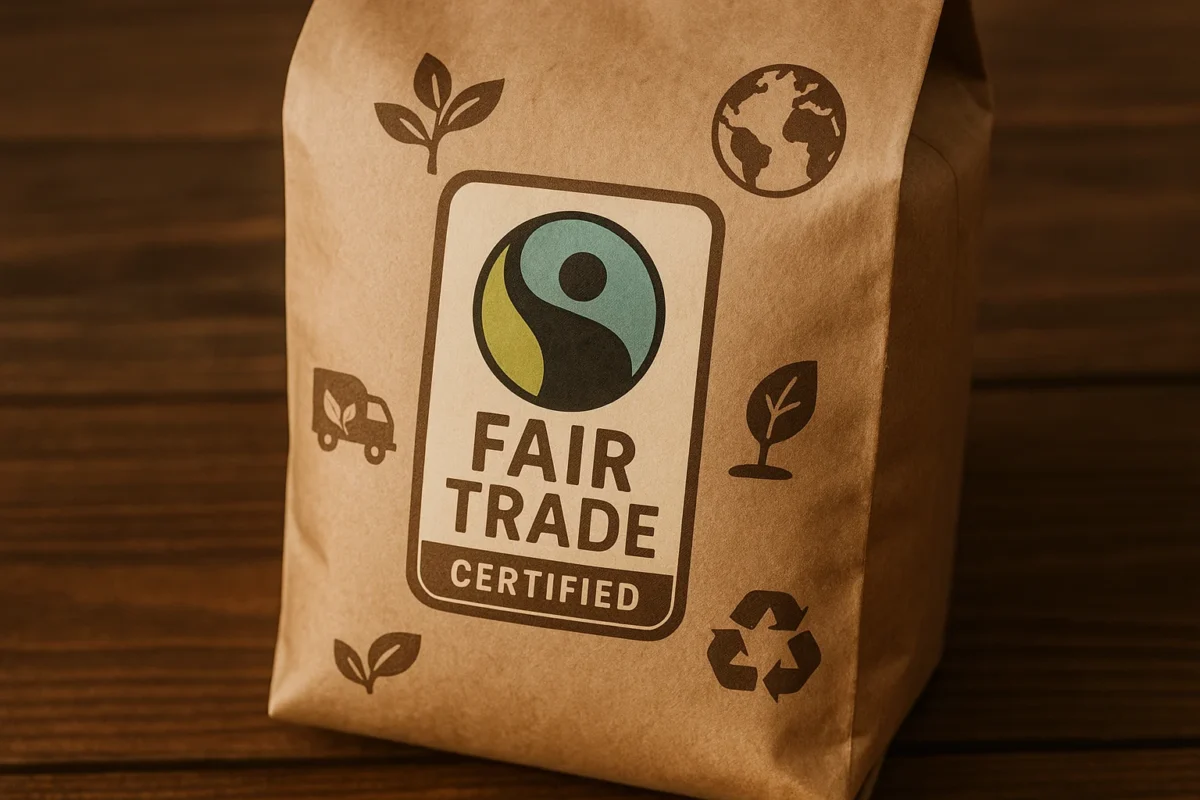
Having traveled to coffee farms and tasted beans worldwide, I can confidently say that understanding where do coffee beans come from. It is key that Transforms coffee drinking from a routine into an experience rich with meaning and connection.
The Story Behind Every Bean
Answering Where do coffee beans come from? Reveals a rich tapestry of history, geography, culture, and science. From wild Ethiopian forests to global trade networks, the journey of coffee beans is complex and awe-inspiring.
Next time you sip coffee, think of the delicate cherries, the farmers’ hands, the unique terroir, and the journey your beans made. To explore the specifics of coffee bean types and their flavor nuances, visit our detailed guide on the 4 Different Types of Coffee Beans.
Expert Tips
- Try single-origin coffees to explore the unique flavors of terroir.
- Support fair trade and sustainable brands.
- Grind fresh beans before brewing to maximize flavor.


Pingback: How Much Coffee For Pour-over? No.1 Best Step-by_Step Guide.